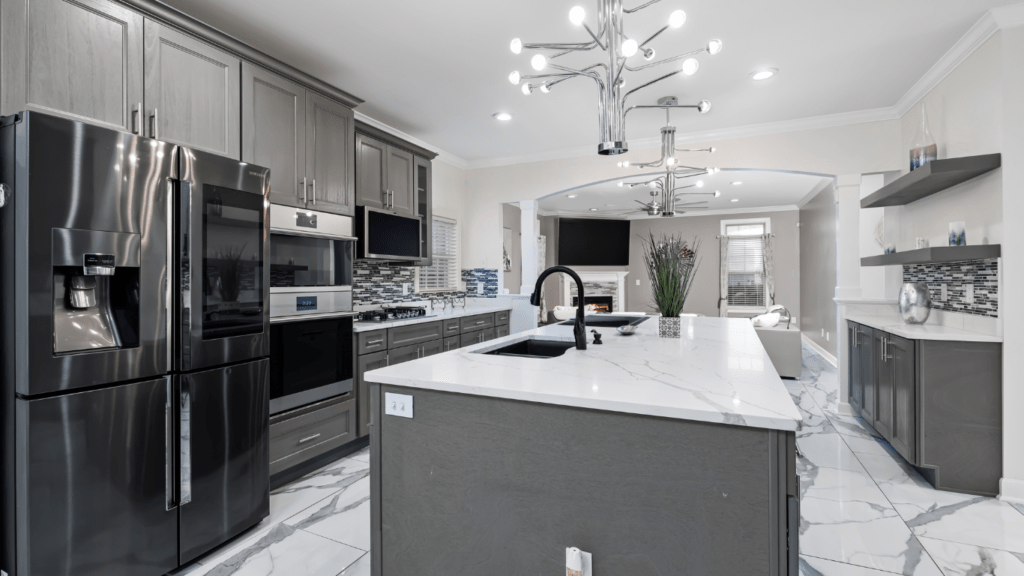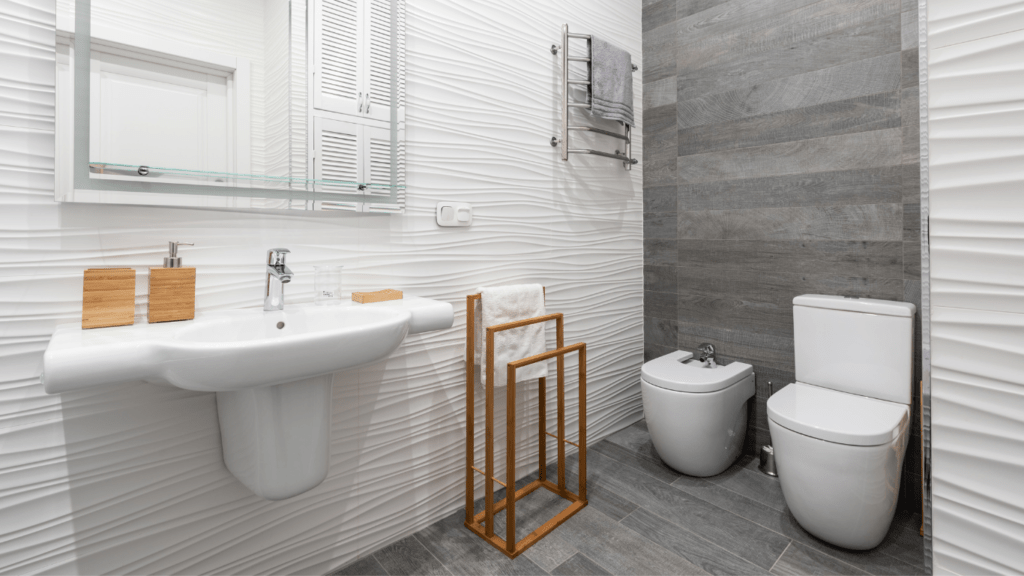Assessing Your Needs And Budget
It’s crucial to start by evaluating your requirements and aligning them with your financial capacity. Knowing where to focus efforts ensures a smoother renovation process.
Prioritize Renovation Areas
Focus on areas that impact daily living and home value. Kitchens and bathrooms, for example, often provide the highest return on investment. Other key areas might include the roof, windows, and floors. Address structural issues first, then move on to cosmetic upgrades.
Setting A Realistic Budget
Determine your budget by assessing available funds and potential financing options. Allocate funds for unexpected expenses. Research average costs for materials and labor in your area to create an accurate budget. Stick to the budget unless unavoidable issues arise.
Research And Planning
Thorough research and careful planning form the bedrock of any successful home renovation project. These steps ensure you consider all variables, stick to your budget, and achieve your desired results.
Exploring Design Ideas
- First, gather inspiration. Browse online platforms like Pinterest and Houzz, and visit home improvement stores to see materials in person.
- Note down recurring themes that catch your eye.
- These examples help visualize your ideal space and guide decision-making.
- Consider functionality.
- Envision daily activities in a redesigned space.
- If a kitchen’s central, focus on counter space and modern appliances.
- For family gatherings, ensure living areas are inviting and spacious.
- Pinpoint elements enhancing both aesthetics and usability.
- Consult professionals.
- Seek opinions from architects and designers.
- They offer insights into feasibility and new creative ideas that fit within your vision.
- Their expertise ensures that inspiration meets practicality.
Creating A Detailed Plan
Detailing a plan is crucial. List all desired changes by room to stay organized. Itemize everything, including structural modifications and cosmetic changes. This eliminates surprises and keeps you on track.
Define your budget. Align each item with a cost estimate based on research and consultations. Include labor, materials, and an extra 10-15% for unexpected expenses. This provides a financial buffer, ensuring smoother execution.
Set a timeline. Break the project into phases, assigning deadlines for each. Factor in lead times for materials and contractors’ schedules. This keeps the project moving forward efficiently.
Secure permits early. Confirm local regulations and obtain necessary permits pre-work. This avoids legal issues and ensures the renovation follows building codes.
Effective research and meticulous planning ensure a seamless renovation journey, turning your fixer-upper into a dream home.
Hiring The Right Professionals

Choosing the right professionals can make or break a home renovation project. Follow these steps to ensure you hire skilled experts who meet your needs.
Finding Reliable Contractors
Reliable contractors deliver quality results, so it’s crucial to choose wisely. Begin by asking friends and family for recommendations. Visit websites like Angie’s List or Yelp for reviews. Consult a shortlist of contractors through phone interviews, asking about their experience, previous projects, and availability. Consider their communication skills and willingness to answer questions, as these can indicate reliability.
Checking Licenses And References
Verify licenses and references to ensure contractors’ credibility. Contact your state’s licensing board to confirm licenses. Ask contractors for multiple references from past clients. Reach out to these clients to inquire about their experiences, including project timelines, budget adherence, and problem-solving abilities. Authentic references and proper licenses are key indicators of a contractor’s trustworthiness and professionalism.
Getting Necessary Permits
Securing the appropriate permits is crucial for any home renovation. Without them, you risk facing fines or halting work unexpectedly due to non-compliance.
Understanding Local Regulations
Local regulations dictate which home renovation projects need permits. For instance, adding a room, altering plumbing, or making structural changes typically require approval, while minor repairs often don’t. I recommend checking your city’s website or contacting your local building department to understand the specific requirements. This step ensures compliance with building codes and helps avoid potential legal issues.
Preparing Permit Applications
Properly preparing permit applications makes the process smoother. You’ll need to submit detailed plans, including diagrams, specifications, and sometimes material lists. Hiring a professional to help draw up these plans may speed things up. Additionally, I suggest gathering all necessary documentation, such as proof of property ownership and contractor licenses, before starting the application. Some municipalities allow online submissions, which can be more convenient. Following these steps ensures your application will be less likely to face delays or rejections.
Buying Quality Materials
Choosing the right materials significantly impacts the outcome of your renovation. High-quality materials provide durability, aesthetic appeal, and long-term savings.
Comparing Material Options
Different materials offer various benefits. Hardwood flooring, for example, provides a timeless look and lasts longer than laminate options. Ceramic tiles resist moisture and are ideal for kitchens and bathrooms, while granite countertops offer great durability and add value to your home. When selecting materials, consider their long-term benefits and maintenance requirements.
Budgeting For High-Quality Items
Allocating funds for high-quality materials ensures your renovation lasts long term. High-end appliances, like:
- energy-efficient refrigerators
- stoves
reduce energy bills over time. Investing in premium paints prevents frequent touch-ups, saving on future costs. Prioritize spending on areas that experience heavy wear, such as floors and countertops, to maximize value and durability.
Ensuring Safety
Every home renovation project must prioritize safety. Neglecting safety can lead to accidents, injuries, or costly damages.
Implementing Safety Measures
I establish safety protocols as a starting point. Clearly marking hazardous areas keeps everyone informed. I ensure proper ventilation by installing fans in dusty or fumy environments. I remove clutter to prevent trips and falls, especially when moving materials. I keep first aid kits accessible in case of minor injuries. I secure tools and equipment in designated places to avoid accidents.
Using Proper Equipment
Using the right tools is crucial for safety. I always wear protective gear, including gloves, goggles, and helmets, to shield myself from debris and sharp objects. I inspect tools before use, checking for any damage. I use power tools with ground-fault circuit interrupters to prevent electrical shocks. For ladders, I set them on stable surfaces, never exceeding the weight limit. I follow manufacturer instructions for all equipment to ensure proper usage and safety.



 Betsylie Sheetsin – Home Renovation Expert
Betsylie Sheetsin serves as the Home Renovation Expert at Castle Shelf House, specializing in giving practical advice for both small and large-scale home improvements. With years of experience in construction and renovation, Betsylie understands the importance of blending durability with design. Her insights into home renovation projects, along with expert advice on the latest materials and techniques, empower homeowners to tackle even the most ambitious projects confidently.
Betsylie Sheetsin – Home Renovation Expert
Betsylie Sheetsin serves as the Home Renovation Expert at Castle Shelf House, specializing in giving practical advice for both small and large-scale home improvements. With years of experience in construction and renovation, Betsylie understands the importance of blending durability with design. Her insights into home renovation projects, along with expert advice on the latest materials and techniques, empower homeowners to tackle even the most ambitious projects confidently.
